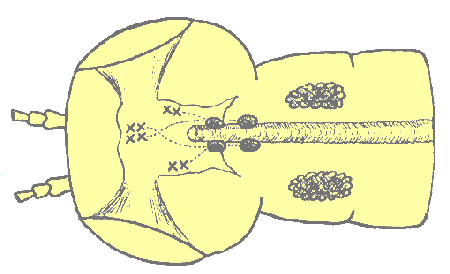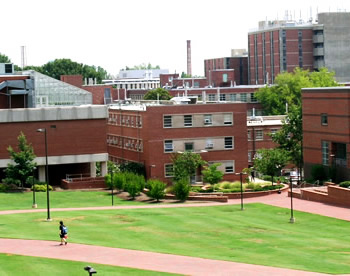The Endocrine System
A hormone is a chemical signal sent from cells in one part of an organism to cells in another part (or parts) of the same individual. They are often regarded as chemical messengers. Although typically produced in very small quantities, hormones may cause profound changes in their target cells. Their effect may be stimulatory or inhibitory. In some cases, a single hormone may have multiple targets and cause different effects in each target. There are at least four categories of hormone-producing cells in an insect’s body:
- Endocrine glands — secretory structures adapted exclusively for producing hormones and releasing them into the circulatory system.
- Neurohemal organs — similar to glands, but they store their secretory product in a special chamber until stimulated to release it by a signal from the nervous system (or another hormone).
- Neurosecretory cells — specialized nerve cells (neurons) that respond to stimulation by producing and secreting specific chemical messengers. Functionally, they serve as a link between the nervous system and the endocrine system
- Internal organs — hormone-producing cells are associated with numerous organs of the body, including the ovaries and testes, the fat body, and parts of the digestive system.
Together, these hormone-secreting structures form an endocrine system that helps maintain homeostasis, coordinate behavior, and regulate growth, development, and other physiological activities.
In insects, the largest and most obvious endocrine glands are found in the prothorax, just behind the head. These prothoracic glands manufacture ecdysteroids, a group of closely-related steroid hormones (including ecdysone) that stimulate synthesis of chitin and protein in epidermal cells and trigger a cascade of physiological events that culminates in molting. For this reason, the ecdysteroids are often called “molting hormones”. Once an insect reaches the adult stage, its prothoracic glands atrophy (wither away) and it will never molt again.
Prothoracic glands produce and release ecdysteroids only after they have been stimulated by another chemical messenger, prothoracicotropic hormone (PTTH for short). This compound is a peptide hormone secreted by the corpora cardiaca, a pair of neurohemal organs located on the walls of the aorta just behind the brain. The corpora cardiaca release their store of PTTH only after they receive a signal from neurosecretory cells in the brain. In a sense, they act as signal amplifiers — sending out a big pulse of hormone to the body in response to a small message from the brain.


